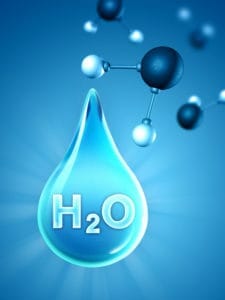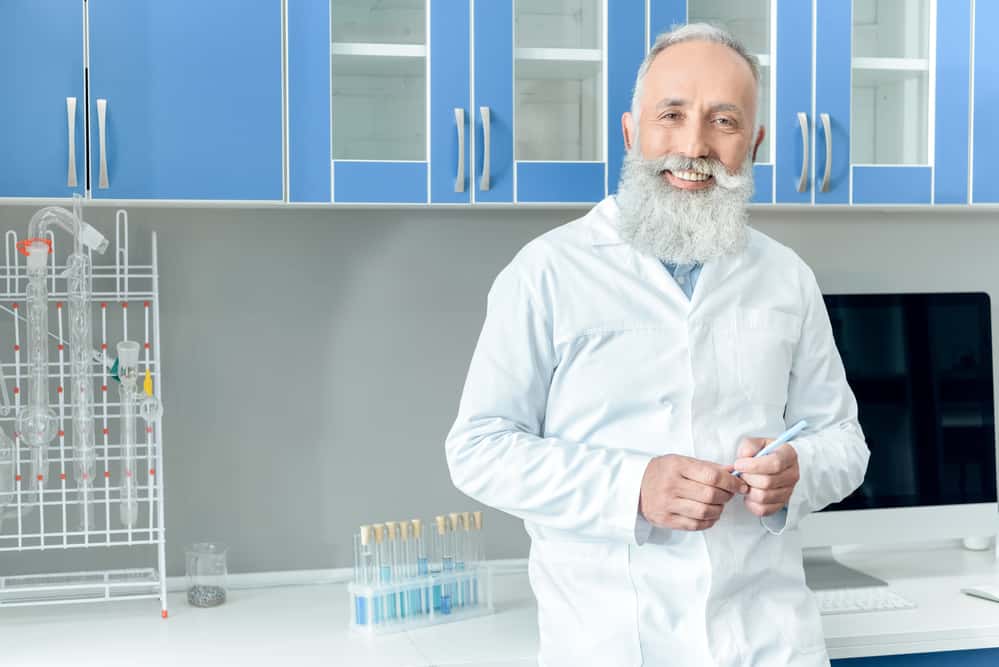We like to share product recommendations with you and hope you like them! Just to make you aware Water Filter Data may collect a small share of sales or other compensation from the links on this page.
Water is the most essential chemical substance, and as time goes by, it seems like it is low in supply.
It’s not just some water; it’s water that keeps us alive, the drinkable water. While the planet is largely surrounded by water (water occupies 71 percent of its surface), oceans contain 97 percent of the water, most of it cannot be used for drinking.
The remaining 3% is similarly difficult to come by.
Then, can humanity create water chemically in the lab? Aren’t we familiar with the formula? It is understood to be produced by the interaction between hydrogen and oxygen. Can we try to do the same?
Water and science
It’s helpful to look at water’s chemical composition, which is H2O, to figure out what it’s made of.
This essentially means that the water molecule is made up of two elements: hydrogen and oxygen, or two hydrogen atoms (H2) and one oxygen atom (O). Hydrogen and oxygen are gases at room temperature.
So, does this suggest that we can actually mix the two gases to create water? It may seem simple, but in reality, what is important in the equation is the energy component of the chemical reaction.
The chemistry behind water
Let’s discover what’s behind the H2O formula. The release of enormous amounts of energy occurs as hydrogen and oxygen atoms combine.
 The smallest atom in the universe, hydrogen, has only one electron in its orbit. Oxygen, on the other hand, only has 6 electrons in its outermost orbit, leaving it two electrons shy of a fully filled outermost casing. To put these two things together, there is an energy barrier that must be resolved.
The smallest atom in the universe, hydrogen, has only one electron in its orbit. Oxygen, on the other hand, only has 6 electrons in its outermost orbit, leaving it two electrons shy of a fully filled outermost casing. To put these two things together, there is an energy barrier that must be resolved.
Also, since hydrogen is an extremely flammable gas and oxygen encourages combustion, what happens when they mix in significant amounts? Make an educated guess.
When this chemical reaction occurs, a significant amount of energy is released, which could result in a full-scale, deadly blast. This is essentially what happened during the 1937 Hindenburg crash.
So is there a chance that we can create water?
The labs and facilities needed to contain such a massive and accidental emission of energy would be too costly to be feasible and commercially sustainable in order to manufacture water to meet the needs of such a large population on the earth.
However, there is another way.
Extracting the water that is still present in the air as water vapor is one way to ‘make’ water. The temperature of the air can be quickly reduced using cooled metal sheets, causing the water vapor to condense.
The Whisson Windmill accomplishes this.
It also provides about 12,000 liters (2,600 gallons) of water per day at a relatively low cost and with virtually no environmental effects. On a slightly smaller scale, a generator can be used to draw air into a cooling chamber, generating 545 liters in one day, equivalent to what is used in disaster-stricken countries as a portable water maker.
It is self-evident that water is not easy to produce. So the only thing we can do is save the water we already have.
Thirsty planet
Drought isn’t the only reason we’re trying to find out how to make water. The world’s population is growing at an exponential rate, and so is the demand for clean water.
There are still areas of the world that lack access to safe drinking water. We waste a lot of the safe, drinkable water we have because we take it for granted.
We keep using water daily in our homes and at work, forgetting that it is a finite resource that could run out at any time. For all of these reasons, finding new ways to generate it is becoming increasingly necessary.
What about the savings of water we have?
Although water is a renewable resource, it’s certainly not infinite. With a rise in population and increasing temperatures, there could be more and more time periods when our water is not properly replenished by the rain cycle.
As a result, water conservation can become increasingly necessary. And, for the time being, extracting water on a global or even planetary scale remains a pipe dream.
What can we do to make the water we already have last longer?
The most important thing to note is that water can not be taken for granted. Here are five suggestions to help you control your usage:
- Showers can be shorter. It’s normal to want to shower more often in hot weather. When you do shower, though, keep it short or even replace a partially filled bath with a longer shower.
- When you’re not using the tap, make sure it’s turned off. This usually happens when you’re brushing your teeth or doing the dishes – but imagine all that wasted water going down the drain!
- When your washing machine or dishwasher is full, just use it. Running one full load saves a lot of water than running two or three partial loads.
- Water the lawn and plants in moderation. Often, water them during the cooler hours of the day. For example, water would not evaporate in the sun in the evening, resulting in less waste.
- Rather than waiting for the tap to run cold, keep a bottle of water in the fridge.
Per year, the average person consumes about 90,000 liters of water, which is enough to fill two petrol tankers! It’s even scarier to consider that by 2025, over 60% of the world’s population would have insufficient access to clean water.
Even the tiniest amount of water conservation by a large number of people will make a significant difference.
Frequently Asked Questions
Can we make water in a lab?
Although it is possible to make small quantities of pure water in a lab, it is not feasible to “make” large amounts of water by combining hydrogen and oxygen.
The reaction is costly, produces a lot of energy, and can result in large explosions.
What is the total volume of water on earth?
The overall amount of water on Earth remains relatively constant, water changes its position and condition on a regular basis. That means it can be a liquid (like the water we drink), a solid (ice), or a gas at any given time (water vapor such as steam).
The hydrologic (water) cycle is a scientific term for the continuous movement of water across the planet as it cycles between the air, the sea, and the ocean.
Wrap Up
In the developing world, water is becoming an increasingly important problem. For other, less developed countries, however, this is not a new issue.
For centuries, many communities, especially the poor, have struggled to access safe drinking water. Water may be available in some places, but it is also contaminated, and consuming it can be fatal. In other places, a reliable water source is almost non-existent.
Since extracting salt from ocean water can cost a lot of money and resources, maintaining large freshwater supplies like groundwater is crucial.
The planet and the ocean are all connected, and what we do in one location can have an effect on the quality of water in another. Chemicals poured down the drain or injected into the atmosphere will end up in the groundwater, reducing the amount of fresh water available for us to use.
The great thing after all is, we can make the most of what we have by conserving and preserving it.

Wayne is a water quality expert – The founder of Water Filter Data. He has a degree in microbiology and his field of expertise is drinking water. His goal is to allow for clean and healthy water for as many people as possible.



